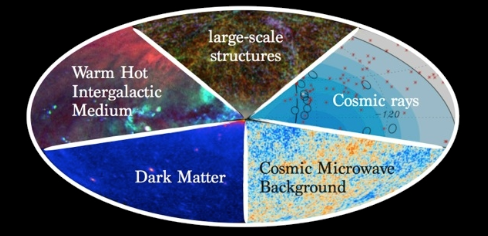Speaker
Miguel Sánchez-Conde
(Oskar Klein Centre, Stockholm University)
Description
A prediction of the standard LCDM cosmological model, also confirmed by N-body cosmological simulations, is that dark matter (DM) halos are teeming with numerous self-bound substructure, or subhalos. The precise properties of these subhalos represent important probes of the underlying cosmological model. Subhalos may also play a key role on the search for DM via its annihilation products. In particular, previous work has shown that subhalos are expected to boost the DM signal of their host halos significantly (so-called subhalo boost). Yet, these works have traditionally assumed that subhalos exhibit similar structural properties than those of main halos of the same mass, while it is well known from simulations that subhalos are more concentrated. In this work, we refine the substructure boost model of Sanchez-Conde & Prada (2014) by taking into account this and other effects. We use N-body simulation data from the Via Lactea II and ELVIS Milky Way-size simulations to learn about the structure of subhalos with masses 1e6 - 1e11 Msun/h. We do so in a way which is independent of any assumption on the DM density profile. Building upon this knowledge, we then provide a set of fits that accurately describe the subhalo structure, and use them to compute the boost. The new values are a factor 2-3 higher than the previous ones. We further refine our boost model to include unavoidable tidal stripping effects on the subhalo population. For main halos, this only introduces a moderate (20-30%) suppression of the boost values. Yet, for subhalos like those hosting the dwarf satellite galaxies of the Milky Way, tidal stripping does play a critical role, the total boost for these objects being only at the level of a few tens of percent in the most optimistic cases. Finally, we provide a parametrization of the boost factor for main halos that can be safely applied over a wide halo mass range.
Author
Miguel Sánchez-Conde
(Oskar Klein Centre, Stockholm University)
